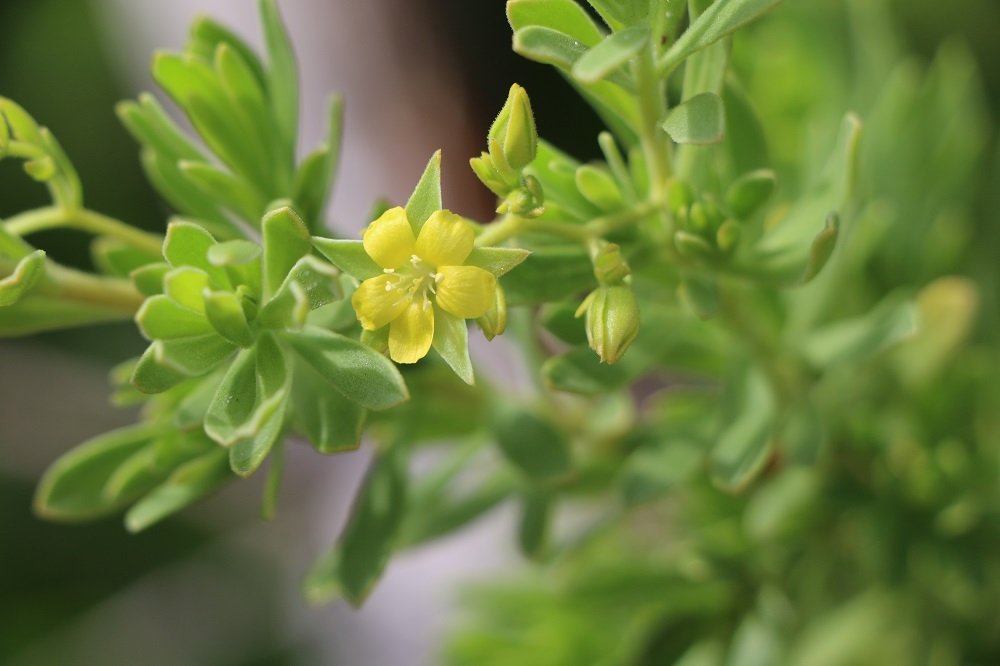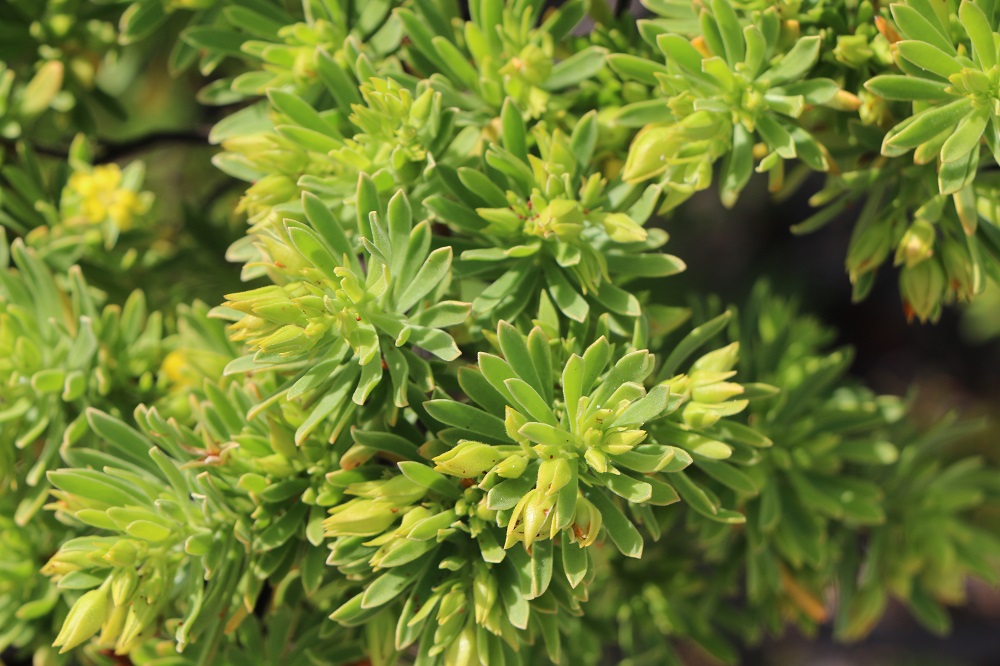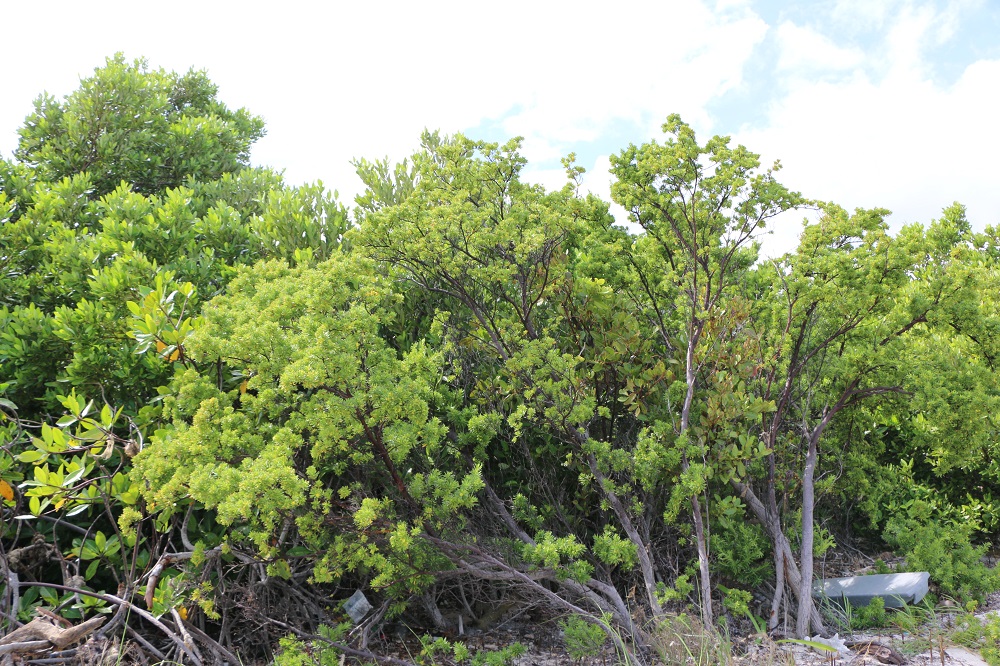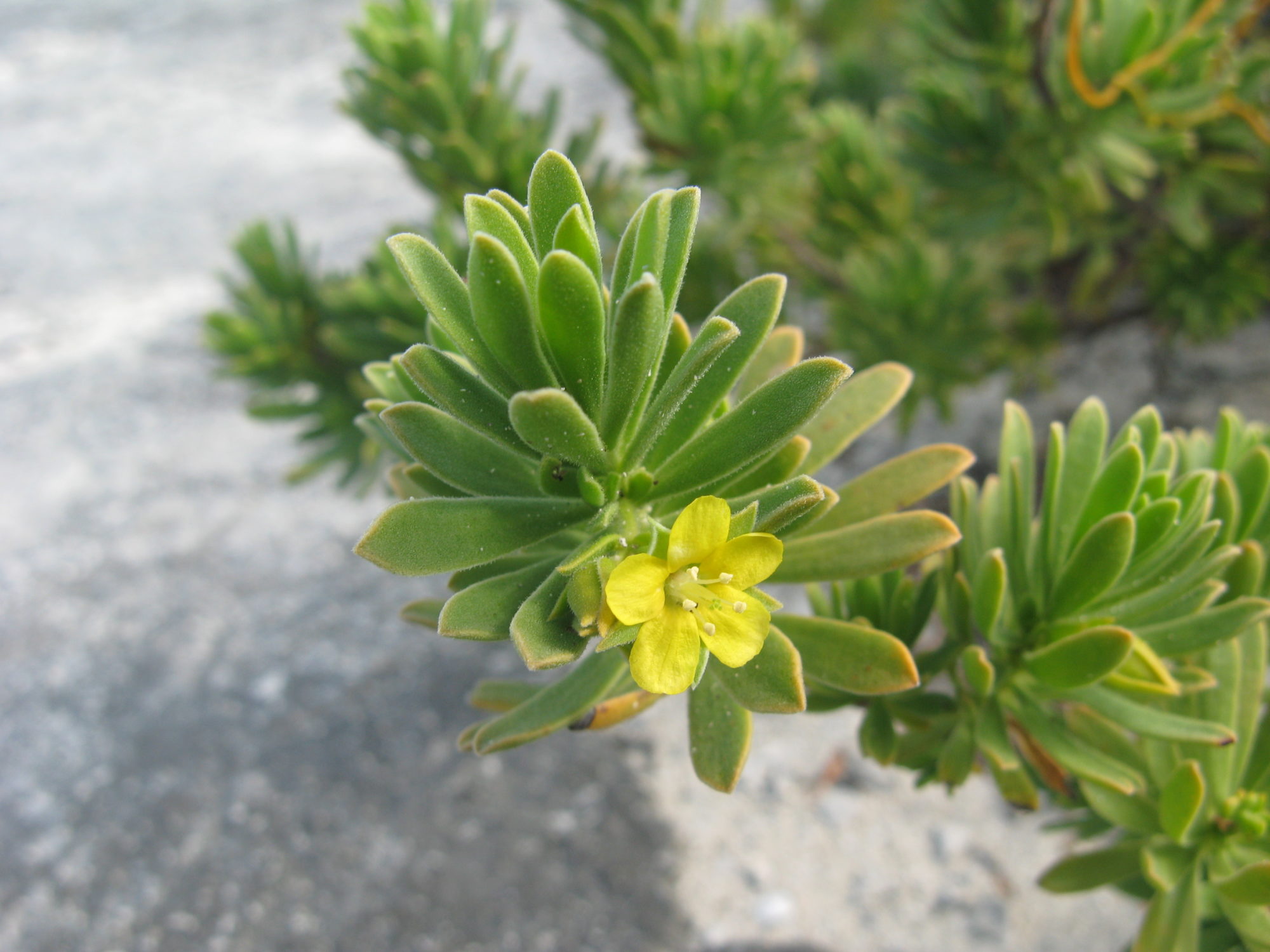Another beautiful plant we saw on Grand Cayman (the largest island in Cayman Islands) is the bay cedar or Suriana maritima. The genus Suriana is a monotypic genus, meaning that the bay cedar is the only species in the genus (New York Botanical Garden: Suriana maritima). The bay cedar is in the Surianaceae, a small family only includes four genera and six species. These species are found in Mexico, Australia and on tropical coasts (The Plant List: Surianaceae).

Bay cedars have five yellow petals that are about as long as the sepals (Suriana maritima, Surianaceae)
This shrubby plant is found in Florida, the Caribbean and Central America. It inhabits sand dunes, rocky shores and thickets. It actually flowers throughout the year, which is unusual to someone who has always lived in the north! It is sometimes used as a landscaping plant near beaches or in sandy soil (University of Florida Extension: Suriana maritima).

The fuzzy gray-green leaves are an easy way to identify the bay cedar (Suriana maritima, Surianaceae)
In the Bahamas, tea made from the bay cedar has been used for skin problems, gastrointestinal issues and pain (Levy Native Plant Preserve: Suriana maritima).

Bay cedar can grow into a large shrub! These plants have brown and flaky bark (Suriana maritima, Surianaceae)

The flowers have a five-parted style, which acts as the receiving platform for the pollen. It is the light green part at the center of the flower) (Suriana maritima, Surianaceae)
